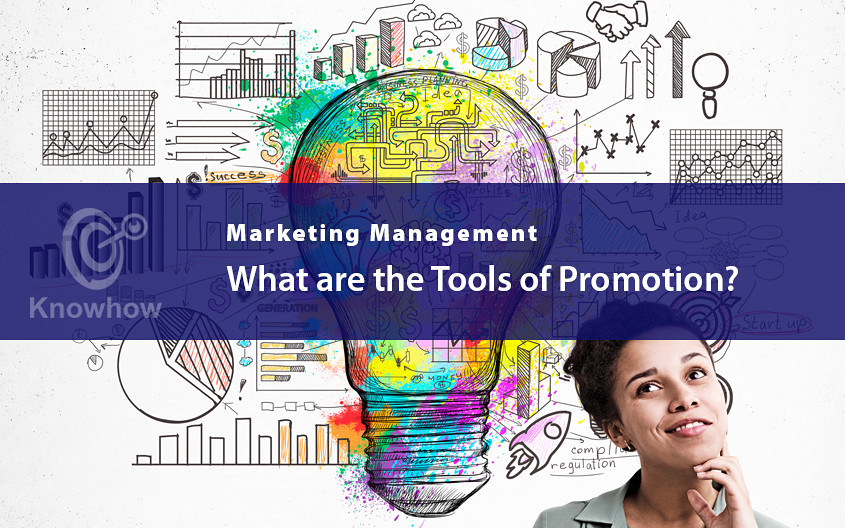
Advertising, Sales Promotion, Public Relation & Direct Marketing
In the context of the “marketing mix,” there are 4Ps to focus on. Namely, the list of 4Ps includes products, prices, places, and promotions. By that theory, you create successful marketing strategies by combining the 4Ps into an outline. Now, we will focus on the fourth P of the mix, the promotions.
Marketers use promotions to communicate their messages to their target audiences. And to achieve that, they are using the four main tools — sales promotion, advertising, direct marketing, and public relation. Let’s take a closer look at each of these tools:
1. Advertising
Any shape of communication or promotion for products, services, and ideas that advertisers pay for falls under advertising. But advertising as such doesn’t limit itself to private businesses. In fact, charities, the government, and even museums use advertisement to send their messages out. Naturally, different organisations approach the advertisement efforts in different manners. However, the basics remain the same. You can divide the advertising development in 5 Ms that can help you develop your marketing plans.
Mission
The basic element of advertising is the mission, as it sets the goals of the advertising campaigns. The most common mission goal is informing the consumer base. Other mission objectives include reminding or convincing the customer base and reinforcing the brand’s position.
Money
No matter how a company organises their marketing strategy, money will always be a crucial aspect and more often than not the driving factor. For that reason, any decisions regarding budget should consider the product life cycle, the market share, and the potential competition.
Message
Advertising efforts should always include a message to the consumers. Development of the message has four important steps: generation, evaluation and selection, execution, and review.
Media
Once a company decides on the message they want to use, the attention of the company should turn to the choice of the media channels they want to contact. The choice can depend on a variety of aspects. The most common deciding factors include the reach of the media, the frequency of transmissions, and the efficiency of the channel. Finally, once a company chooses between newspaper, television, the Internet, or other channels of media communication, they simply have to time the broadcasts right.
Measurement
Following through on advertisement campaigns is very important. Measuring the success of various campaigns can give companies a good idea in regards to how they want to proceed.
2. Sales Promotion
Promotions are tools of incentive that companies use to boost sales in the short term. To put it simply, the focus of advertisement is on giving people a reason to use a specific product. On the other hand, the focus of sales promotions is on giving them the incentive to purchase the product.
Most companies organise their promotions around samples, coupons, and free trials. And all of those are excellent consumer incentives. On the other hand, companies that focus their efforts on trade incentives offer discounts, free products, or allowances. And lastly, incentives for sales forces usually include conventions, trade shows, and competition rewards.
The objective of sales promotions is not always the same. Some promotions are designed to hook new customers, some are there to give rewards to loyal consumers, and others are there to remind the casual customers of the company. These promotions are the most effective when companies use them to target brand switchers.
3. Public Relations
Companies can no longer survive simply by providing high-quality products. And no amount of advertising can help companies that have no public relations mechanisms in place. For that reason, companies have to be in contact with their customers and other stakeholders. Setting up a public relations office is a must for every company that wants to succeed.
The main tasks of the public relations office are handling press releases, maintaining the corporate image of the company, and supporting the company’s public image in other ways. Modern companies are even looking for ways to combine their marketing and PR offices into one function.
The resulting marketing PR presents an excellent way to build awareness with the additional help of the media. After all, marketing PR officers can generate the relevant stories for the media and establish credibility for those stories with relative ease.
4. Direct Marketing
Most forms of marketing use intermediaries in one way or another. However, lately, direct channels of communication are becoming ever increasingly popular. It is a simple approach that is possible thanks to modern technologies. One of the most important developments for the growth of direct marketing is the advent of the Internet which has transformed the whole landscape.
Working without intermediaries can cut down on expenses and expedite the process of communication. Customers can provide companies with instant feedback and companies can adapt to that feedback immediately. Furthermore, customers enjoy the personal touch direct marketing brings to the table.
Related content:
Marketing Management Knowhow – learn more about marketing with our collection of educational articles.
From corporate promotional pens, printed mugs, metal water bottles through to golfing umbrellas, promotional hats and fitness trackers, here at GoPromotional we believe that you are sure to find the perfect custom printed logo merchandise to help successfully market your brand.
If however, you require further information or have any specific questions, don’t hesitate to give a member of our experienced team a call on 0800 0148 970 or simply email us today.






